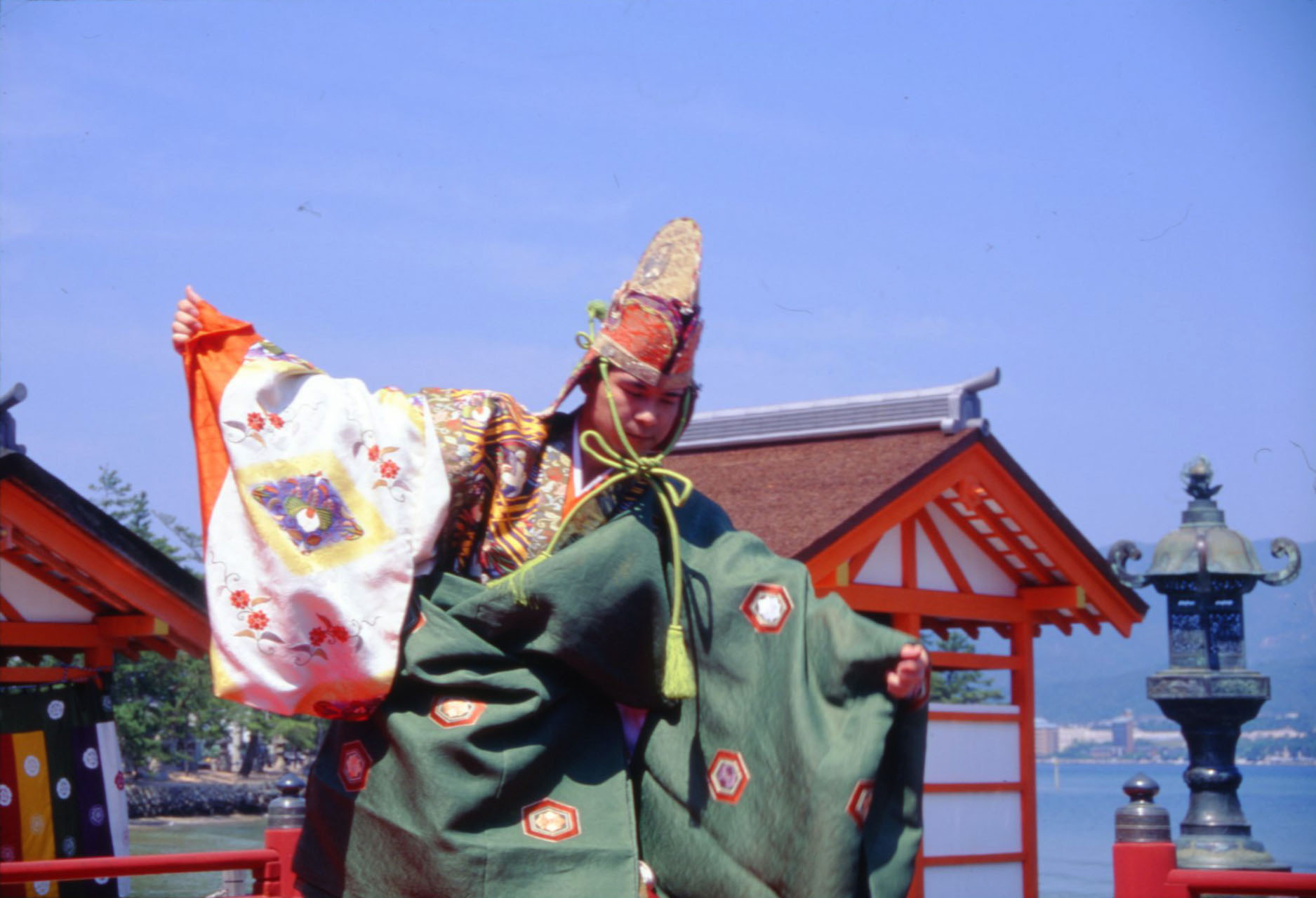"The mystery of the Orient is legendary . . . it was in the air the moment we stepped ashore in Kyoto, and now in Tokyo it began to envelop us." That's how Charlie Chaplin described his arrival in Japan. I'm not sure if the "Little Tramp" ever visited the island of Miyajima on any of his four trips to Japan, but if so, I'm sure the sense of mystery would have positively engulfed him there, too.
My wife, Angeles, and I first set foot on Miyajima in the twilight days of the last millennium, when we'd been in Japan less than a week. The mystery started before we'd even reached the island. Outside the ferry terminal in Miyajima Guchi in Hiroshima, an intimidatingly large statue glowered down at us. Its robes were a splendid green and gold, but its mask was a nightmarish grimace: demonic, bulging eyes, vicious teeth, fox-like ears and a mythological bird of gold perched on its head. For sheer otherness, I had never seen anything like it. To borrow from another Japan Times column, it was my "What the heck is that?" moment. I later learned that this startling creature was a character from a traditional ritual called bugaku. I was instinctively drawn to it, like a tortoise to a bed of begonias.
The following winter I got a chance to see what it was all about. Mind you, my first attempt at seeing bugaku was a failure on a par with Eric Newby's exploits in his book "A Short Walk Through The Hindu Kush." I'd seen a flier stating that the performance started at "5:30" on Jan. 5. What a perfect hour — I envisaged the scene: night falling over the primeval forest of Miyajima's Mount Misen, Itsukushima Shrine lit up, shimmering on the crow-black waves.



